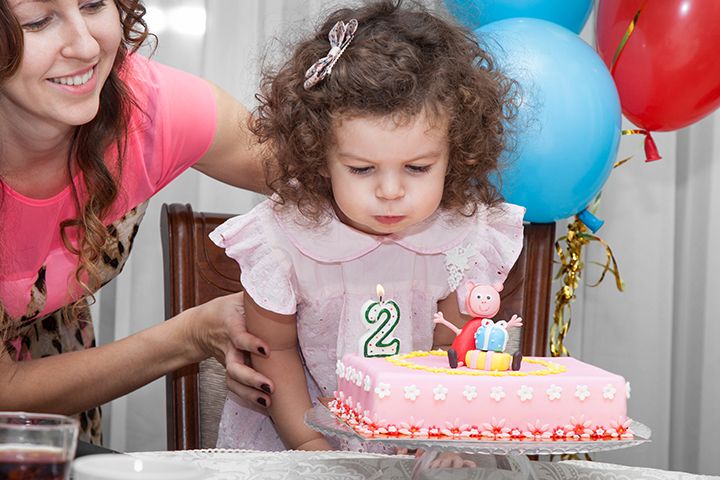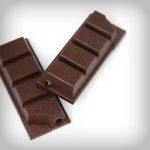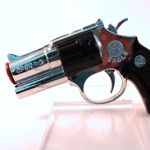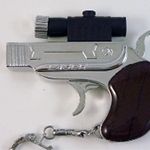Outdoor Grilling
Outdoor grilling brings family and friends together. A backyard barbecue makes any meal a special event. According to the Hearth, Patio and Barbecue Association, four out of five households own a grill or smoker, and virtually all of them have been used in the last year.
But grilling is an activity that requires great care, from storing the fuel to lighting the flame to cooking the food. And like other forms of cooking, grilling not only carries the risk of fire, but contact burns from touching the hot grill, flames or fuel.

Whether you are using a gas or charcoal grill, take these important steps to grill safely:
Please be sure to read the Manufacturer’s instructions and warnings before use. Grill outdoors only.
- Grilling indoors, or in a poorly ventilated area, can cause carbon monoxide poisoning.
- Grill away from the house. Sparks or flare-ups while grilling can ignite a wood structure, and the heat from the grill can melt or warp some building materials like vinyl siding.
- Position the grill on a stable, nonflammable surface away from dry leaves, brush or other materials that might ignite. Dry leaves pose a particular safety hazard because they are highly flammable, light in weight, and likely to fly around in a sudden wind gust. Any flammable materials near the grill pose a risk if a charcoal fire throws sparks.
- Keep children and pets a safe distance from the grill – at least three feet away. Remember that grills using charcoal stay hot much longer after cooking than gas grills. Be sure children continue to “keep away” until a charcoal fire is completely extinguished and the grill is cool to the touch.
- Use long-handled grilling tools, including a long wand lighter like the BIC® Multi-purpose lighter, to keep your hands as far from the fire as possible.
- Do not wear loose clothing, billowy sleeves, long shirt tails, or anything that might come in contact with flames. If you have long hair, tie it back to keep it away from flames.
- Avoid flare-ups. When using charcoal, spread the coals evenly. Remove grease or fat build-up from every part of the grill.
- Never use gasoline or kerosene as starter fluids as they can cause explosions. And never put lighter fluid on a hot grill. Make sure lighter fluids are stored securely and away from children.
- Never leave a grill unattended.
- Keep a fire extinguisher nearby. If you don’t have one, a box of baking soda can do the trick.
- Never move a hot grill.
- When you are finished with a charcoal grill, let the coals cool completely before moving or storing it.
- Safely store lighters and matches away from children. Click here for tips on safe storage of lighters and matches.
Candles
Celebrating birthdays, setting a relaxing mood, decorating for special occasions, or enhancing the scent of our homes, candles are a part of our everyday lives.
And since we use them so often, it’s important to always use them safely. Even though the flame may be small, it can still be dangerous.

Using candles safely:
- Keep candles at least 12 inches away from anything that might burn, including furniture, bedding, curtains and decorations.
- Reduce the chance that candles might tip over by using sturdy candle holders on a flat, open surface.
- Be careful about your clothing. Keep loose sleeves and long hair away from the flame.
- Make sure your candles are out before going to bed or leaving a room.
- Don’t burn a candle all the way – extinguish it before it gets close to the end. If for cultural or religious reasons you will allow a candle to burn completely, make sure it is in a glass, ceramic or other nonflammable container that will not conduct heat, and place it on a nonflammable surface like a glass table or stone hearth.
- Never leave children or pets unattended with candles burning.
Campfires
Toasting marshmallows. Telling spooky stories. Cuddling up beside the fire as the night air grows cooler. Campfires kindle warm memories and evoke the freedom of the outdoors. But, like all fires, they need to be contained and tended with care.
Hot embers or ashes are a leading cause of brush, grass and forest fires, which can destroy countless acres of land, wildlife and homes, as well as threaten human life.

Stay safe around campfires.
- Obey the 3-Foot rule. Keep children and pets at least three feet from the fire.
- Make sure tools used for toasting are appropriate and long enough to keep a safe distance.
- Use long-handled matches or long wand lighters, like the BIC® Multi-purpose Lighter, to keep a safe distance when lighting a fire.
- Never use gasoline or kerosene to start or maintain a campfire. They are very volatile and can cause explosions.
- In campgrounds and picnic areas, use only the established fire pits provided and follow the campground rules for their use.
- If campfires are allowed outside campgrounds, choose a site well away from your tent, structures, vehicles, shrubs and trees including low-hanging branches. Clear the site down to the soil, at least five feet on all sides.
- Keep it small. A large campfire can cast hot embers long distances and is more likely to get out of control.
Put It Out and Make Sure It’s Out!
- Never leave your campfire unattended.
- Put it out completely before you go to bed or leave the campsite.
- Allow the wood to burn completely to ash, if possible.
- Pour lots of water on the fire; drown ALL embers, not just the red ones.
- Pour water until hissing sound stops.
- Stir the campfire ashes and embers with a shovel.
- Scrape the sticks and logs to remove any embers.
- Make sure everything is wet and cold to the touch. If it’s too hot to touch, it’s too hot to leave!
Check out Smokey Bear’s Campfire Safety Guides on:
Fireplaces and Fire Pits
Whether fueled by wood or gas, the illumination from the flames of a fireplace cheers us on gray days and snowy nights. They are focal points for family gatherings and holiday celebrations. Just be sure to follow some simple rules and you’ll not only feel warm and cozy, you’ll be safe, too.
Hot embers or ashes are a leading cause of brush, grass and forest fires, which can destroy countless acres of land, wildlife and homes, as well as threaten human life.

Fireplace Safety
- Please be sure to read the Manufacturer’s instructions and warnings before use.
- Remember to open the flue on the fireplace before starting the fire and leave it open until the fire has completely stopped burning.
- Have the chimney inspected and cleaned annually by a professional.
- Leave glass doors open while burning a wood fire and use a metal mesh screen to catch burning embers or shifting logs.
- Remember, closed glass doors on a gas fireplace get extremely hot. Consider installing a safety screen over the glass or a free standing safety gate around the hearth.
- Never leave the fireplace or children unattended when using the fireplace, while the embers in a wood fireplace are still burning or for an hour after turning off a gas fireplace.
- Never use flammable liquids to start a fire in an indoor fireplace.
- For gas fireplaces, move the gas valve to "closed" when you're not using it.
- Keep children, pets, and anything that can burn at least 3 feet (1-meter) from the fireplace.
- Be certain your carbon monoxide and smoke detectors are working. Carbon monoxide can build up from a poorly vented fireplace. Always make sure to have a fire extinguisher on hand inside the house.
Indoor Portable Fireplaces
- Please be sure to read the Manufacturer’s instructions and warnings before use.
- Place the fireplace on a sturdy surface away from table edges.
- Never try to move a lit fireplace or one that is still hot. Allow it to cool down for at least 15 minutes completely or in accordance with manufacturer’s instructions before refueling. As with candles, put out the flame when you leave the room, or go to sleep.
- The fireplace and fuel should only be used by adults, and an adult should be present at all times when a portable fireplace is burning.
Outdoor Fire Pits
- Make sure your fire pit is on a stable, nonflammable surface—not a wooden deck—and at least 10 feet (3-meters) from your home, covered deck, hanging branches, or anything flammable.
- Only use the fuel that the pit is built to burn. With gas pits, make sure all vents are clear.
- Use a spark screen to prevent sparks from flying.
- Don't overload a wood burning fire pit. Flames shouldn't be more than 6 inches (15 cm) above the outer rim.
- Douse a wood fire completely when you are done. For a gas or propane pit, turn off the supply before putting out the fire.
- Have a fire extinguisher, water or sand nearby whenever using your fire pit.
Additional Resources:
The Hearth, Patio and Barbecue Association website provides additional information on these products, their safe use, installation and maintenance: View fact sheets here.
Novelty Lighters
Novelty lighters don’t look like typical lighters. They look like everyday objects. And that’s what makes them especially dangerous. The shape of these lighters often resemble cartoon characters, vehicles, toys such as footballs or skateboards, animals, food, beverages, or devices such as cell phones or microphones. Some have flashing lights or audio effects.
And some are even shaped like fire safety items, such as fire hydrants or extinguishers!







The U.S. Fire Administration believes that it is nearly impossible for a child, and oftentimes an adult, to distinguish between toys and these types of lighters.
We tell our children that lighters are tools for adults only, not toys for children. Why undermine that important rule by using a lighter designed to look like a toy?
Novelty lighters are subject to the same requirements for child-resistance in the U.S. (adopted by the Consumer Product Safety Act in 1994) and in Canada (adopted by the Lighter Regulations, enacted in 2008). But many of these lighters do not meet that standard.
The European Commission banned the marketing of novelty lighters starting in March 2007. At least 14 U.S. states have passed legislation banning the sale and distribution of novelty lighters. BIC does not manufacture novelty lighters, and has been an enthusiastic supporter of such legislation since it was first introduced in 2008, when Maine became the first state to ban novelty lighters. Personal possession of a novelty lighter is not a punishable offense, but sale or distribution within these states is.
In practice, though, these bans are difficult to enforce at the point of sale. It’s up to consumers to keep such lighters out of circulation.
Safe storage
Lighters and matches are convenient, and often necessary, tools in our homes. But in the wrong hands, they can be very dangerous. Remember the three most important words when it comes to lighters and matches: Put It Away!
Whether the children in your home are your own children, your grandchildren, or visitors, keeping lighters and matches out of sight and reach is critical. Most children who play with lighters or matches simply take advantage of them being left out and easily accessible.

Store It Safely:
- Collect all matches and lighters and put them in one secure place.
- Choose a storage space high enough to be out of the reach of children, such as an upper cabinet.
- Locking them away is the safest measure, but it may not be practical for most families.
- Work hard to develop the habit of always putting matches and lighters back in their proper storage place after each use. A great way to do this is to enlist your children’s help by teaching them to “tell a grown-up” if they find lighters or matches lying around, in addition to being taught “not to touch.” Praise children when they follow these rules and remind you to put matches and lighters away! Learn more about Children & Fire here.
- If family or friends bring lighters or matches into your home, even if they are stored in their pockets or purses, make sure to remind them to keep the tools out of sight and out of reach of the young children in your home.
For maximum safety, use only lighters with a child-resistant mechanism. Look for BIC® Lighters as a brand you can trust. Every BIC® Lighter sold in the US and Canada has a child-resistant mechanism and has passed more than 50 individual quality and safety inspections, meeting or exceeding the lighter safety standards established by the International Organization for Standardization (ISO), the American Society for Testing and Materials (ASTM), the U.S. Consumer Product Safety Commission (CPSC), and other government agencies. While no lighter is child-proof, the child-resistant mechanism makes it much more difficult for children to light them and adds a critical margin of safety.
Learn more about BIC® Lighters here.




